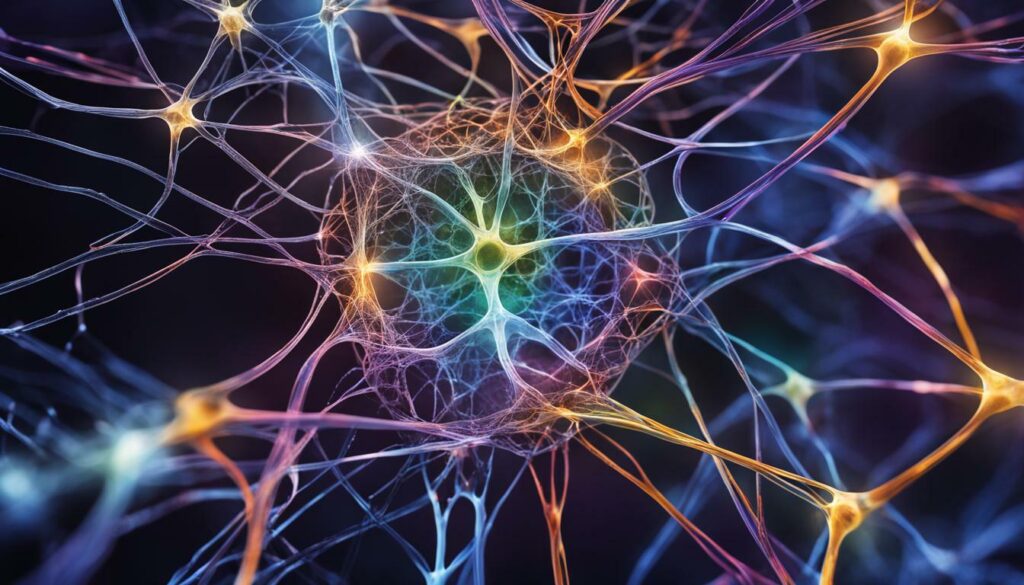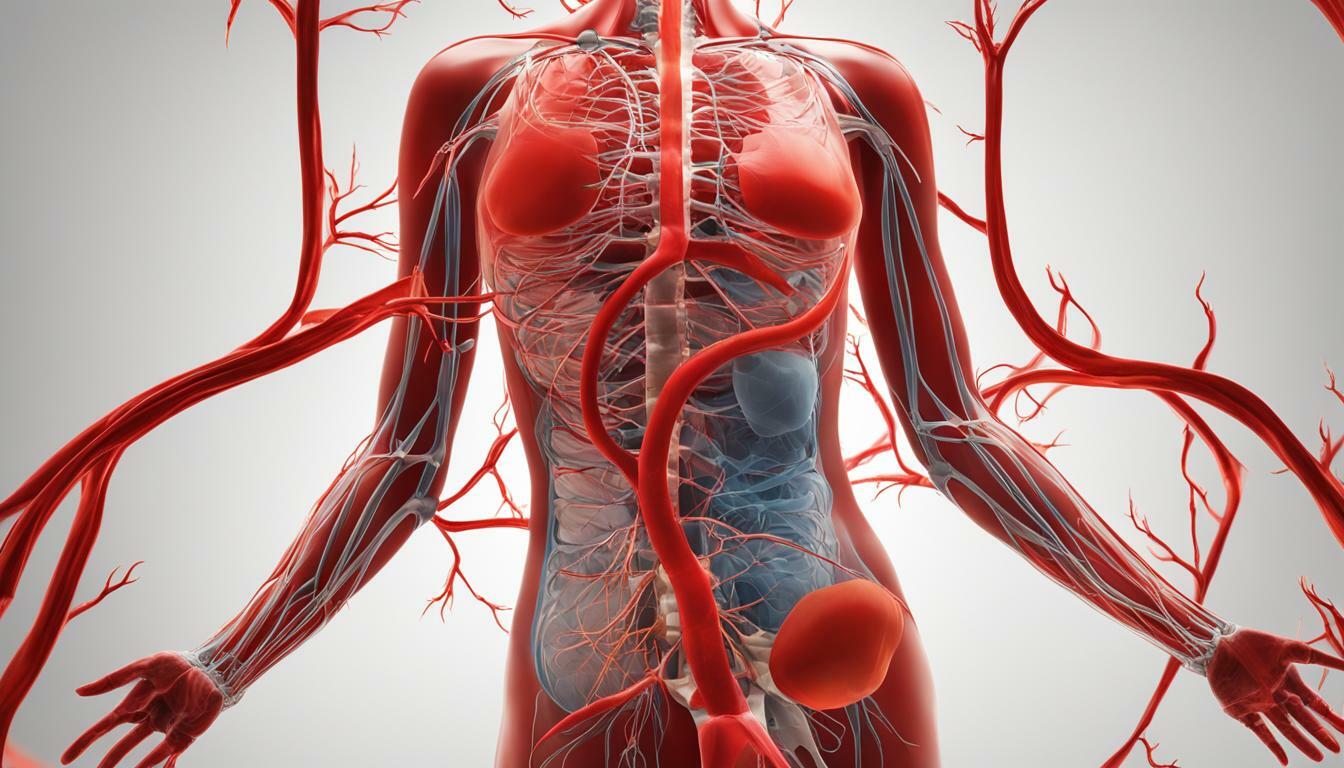
Osteopathy, specifically osteopathic manipulative treatment (OMT), is a hands-on treatment method utilized by doctors of osteopathic medicine (DOs) to enhance nerve function and optimize overall health. OMT involves gentle pressure and manipulation of the muscles, soft tissues, and joints to ensure proper alignment and balance, facilitating the body’s natural healing process. It is used to treat a wide range of health conditions, including mechanical pain, musculoskeletal problems, breathing issues, bowel issues, chronic pain, and problems associated with pregnancy, among others.
Key Takeaways
- OMT is a hands-on treatment method used by DOs to enhance nerve function and optimize overall health.
- OMT involves gentle pressure and manipulation of the muscles, soft tissues, and joints.
- OMT can be used to treat a wide range of health conditions.
Understanding OMT: A Holistic Approach to Health
Doctors of osteopathic medicine view the body as an interconnected system where all the systems work together and affect each other. This approach is known as a holistic approach, which considers the whole person rather than just the symptoms they present with. DOs utilize osteopathic manipulative treatment (OMT) as a comprehensive treatment option to enhance nerve function and optimize overall health.
OMT is a hands-on treatment method that involves gentle pressure and manipulation of the muscles, soft tissues, and joints. By ensuring proper alignment and balance, OMT facilitates the body’s natural healing process. It is used to treat a wide range of health conditions, including mechanical pain, musculoskeletal problems, breathing issues, bowel issues, chronic pain, and problems associated with pregnancy, among others.
In addition to evaluating and treating the physical symptoms, DOs take into account factors such as activity level, exercise habits, diet, environment, lifestyle, mental and physical health, sleep habits, and stress levels. This approach enables DOs to determine the underlying causes of symptoms and provide comprehensive treatment.
OMT is commonly used to treat lower back pain, but it can be beneficial for people of all ages, including babies, children, and pregnant women. However, individuals with osteoporosis, bone cancer, or other joint concerns should not undergo osteopathic manipulative treatment without consulting their DO.
Before starting OMT, the DO will gather information about the patient’s symptoms, lifestyle, and health history. They may also conduct a physical examination and order imaging studies if necessary. During the treatment session, the patient may sit, lie down, or stand as the DO applies pressure and manipulation to stretch the muscles and align the joints. Different techniques may be used depending on the patient’s condition, and the patient may be asked to hold or release their breath at specific times. After the session, the patient may experience soreness or fatigue, but these effects are temporary.
The advantages of OMT include addressing structural problems in the body, improving circulation, preventing health problems, soothing tight muscles, relieving joint stiffness, and improving range of motion. OMT is a lower-cost, noninvasive, and highly effective treatment method that promotes full-body healing.
OMT has been the subject of research and studies that demonstrate its therapeutic value in enhancing nerve function and promoting health. One study focused on patients with severe traumatic brain injury (TBI) and elevated intracranial pressure (ICP) who received OMT. The results showed that OMT led to a decrease in ONSD (optic nerve sheath diameter), an increase in NPi (Neurological Pupil Index), a decrease in ICP, and a decrease in cerebrospinal fluid (CSF) output. These changes indicated improved glial lymphatic clearance of CSF, reduced brain edema, and improved interstitial waste product removal.
Overall, OMT is a valuable method for optimizing health and enhancing nerve function. It is a safe and effective treatment option for various health conditions, and its benefits extend beyond symptom relief to improve overall well-being. As the field of osteopathic medicine continues to grow and gain recognition, it is important to educate the medical community and the public about the therapeutic uses and potential benefits of OMT. Future research can further explore the molecular mechanisms and biomarkers associated with the systemic benefits of osteopathic medicine, paving the way for more targeted and effective treatments in the future.
Benefits and Applicability of OMT
OMT is commonly used to treat lower back pain, but it can be beneficial for people of all ages, including babies, children, and pregnant women. OMT can also be effective for individuals with osteoporosis and joint concerns, but it is important to consult with a DO before undergoing treatment.
OMT is a versatile treatment method that can be tailored to individual needs and conditions. For babies and children, gentle techniques are used to address issues such as colic, ear infections, and digestive problems. Pregnant women can benefit from OMT to alleviate back pain, pelvic pain, and other pregnancy-related discomforts.
OMT can also be used to prevent health problems by improving range of motion, circulation, and lymphatic drainage. It can soothe tight muscles and relieve joint stiffness, enhancing overall physical performance and reducing the risk of injury.
| Age Group | Benefits of OMT |
|---|---|
| Babies and children | Relief from colic, ear infections, and digestive issues |
| Pregnant women | Alleviates back pain, pelvic pain, and other pregnancy-related discomforts |
| Individuals with osteoporosis and joint concerns | Improves range of motion, circulation, and lymphatic drainage |
Before starting OMT, a DO will gather information about the patient’s symptoms, lifestyle, and health history. They may also conduct a physical examination and order imaging studies if necessary. During the treatment session, the patient may sit, lie down, or stand as the DO applies pressure and manipulation to stretch the muscles and align the joints. Different techniques may be used depending on the patient’s condition, and the patient may be asked to hold or release their breath at specific times. After the session, the patient may experience soreness or fatigue, but these effects are temporary.
Overall, OMT is a safe and effective treatment option for a wide range of health conditions. Its benefits extend beyond symptom relief to address underlying structural issues and improve overall well-being. By promoting full-body healing and enhancing nerve function, OMT can optimize health and prevent future health problems.
The OMT Process: Evaluation and Treatment
Before starting OMT, the DO will gather information about the patient’s symptoms, lifestyle, and health history. This information helps the DO determine the underlying causes of the symptoms and tailor the treatment to the individual’s needs. The DO may also conduct a physical examination and order imaging studies if necessary to obtain a clearer picture of the patient’s condition.
During the treatment session, the patient may sit, lie down, or stand as the DO applies pressure and manipulation to stretch the muscles and align the joints. The DO may use various techniques depending on the patient’s condition, such as soft tissue techniques, mobilization and manipulation, and muscle energy techniques. The patient may be asked to hold or release their breath at specific times to assist with the manipulation process.
OMT is a safe and effective treatment method that can provide significant relief for various health conditions. However, it is important to note that there may be temporary effects after the treatment session, such as soreness or fatigue. These effects are normal and typically subside within a few days.

The OMT process is a noninvasive and highly effective way to address structural problems in the body and improve nerve function. The DO’s comprehensive approach to treatment allows them to address the root cause of the patient’s symptoms and promote full-body healing.
Advantages of OMT: Healing and Well-being
The advantages of osteopathic manipulative treatment (OMT) extend far beyond symptom relief. OMT is a highly effective treatment method that promotes full-body healing. Here are some of the advantages of OMT:
- Addressing structural problems in the body: OMT involves gentle pressure and manipulation of the muscles, soft tissues, and joints to ensure proper alignment and balance. This can help address issues such as misalignments, posture problems, and other structural issues.
- Improving circulation: OMT can improve blood and lymphatic flow throughout the body, which can help reduce inflammation and pain and improve overall organ function.
- Preventing health problems: OMT can help prevent future health problems by improving the body’s natural healing and immune response, reducing the risk of injury, and improving overall health and wellness.
- Soothing tight muscles: OMT can help relax tight muscles, reduce muscle tension, and improve flexibility and mobility.
- Relieving joint stiffness: OMT can help relieve joint stiffness and improve range of motion, which can be beneficial for people with arthritis or other joint problems.
Overall, OMT is a lower-cost and noninvasive treatment method that can have numerous benefits for the body. By addressing both the symptoms and underlying causes of health conditions, OMT can help optimize overall health and enhance nerve function.

Research and Evidence: OMT and Nerve Function Enhancement
OMT has been the subject of research and studies that demonstrate its therapeutic value in enhancing nerve function and promoting health. Studies have shown how OMT can be effective in treating a range of conditions, including chronic pain, breathing issues, and bowel problems. Of particular note is a study that focused on patients with severe traumatic brain injury (TBI) and elevated intracranial pressure (ICP) who received OMT.
The study showed that OMT led to a decrease in ONSD (optic nerve sheath diameter), an increase in NPi (Neurological Pupil Index), a decrease in ICP, and a decrease in cerebrospinal fluid (CSF) output. These changes indicated improved glial lymphatic clearance of CSF, reduced brain edema, and improved interstitial waste product removal. This study provides strong evidence for the therapeutic value of OMT in enhancing nerve function, especially in individuals with traumatic brain injury.
Research in the field of osteopathic medicine is ongoing, and future studies can further explore the molecular mechanisms and biomarkers associated with the systemic benefits of OMT. This can lead to even more targeted and effective treatments in the future, expanding the potential benefits of osteopathic medicine to even more individuals.

OMT’s Role in Optimizing Health
Overall, OMT is a valuable method for optimizing health and enhancing nerve function. It is a safe and effective treatment option for various health conditions, and its benefits extend beyond symptom relief to improve overall well-being.
OMT takes a holistic approach to health, viewing the body as an interconnected system where all the systems work together and affect each other. This comprehensive treatment evaluates factors such as activity level, exercise habits, diet, environment, lifestyle, mental and physical health, sleep habits, and stress levels to determine the underlying causes of symptoms.
One of the many advantages of OMT is its ability to address structural problems in the body, improve circulation, soothe tight muscles, and relieve joint stiffness. By promoting full-body healing, OMT can prevent health problems and improve range of motion.
Unlike invasive procedures or medications, OMT is a highly effective and lower-cost treatment method that promotes long-term well-being. Additionally, OMT is safe and suitable for people of all ages, including pregnant women and children.
Research and studies have demonstrated the therapeutic value of OMT in enhancing nerve function and promoting health. For example, a study focused on the effect of OMT on patients with severe traumatic brain injury (TBI) found significant improvements in interstitial waste product removal, brain edema reduction, and glial lymphatic clearance of cerebrospinal fluid (CSF). This indicates that OMT can play an important role in enhancing nerve function and promoting overall well-being.
OMT is not just a means of symptom relief – its potential benefits extend beyond that. By optimizing health, OMT can lead to a better quality of life. As the field of osteopathic medicine continues to grow, it is important to educate the medical community and the public about the therapeutic uses and potential benefits of OMT. Future research can further explore the molecular mechanisms and biomarkers associated with the systemic benefits of osteopathic medicine, paving the way for more targeted and effective treatments in the future.

The Future of OMT and Osteopathic Medicine
As the field of osteopathic medicine continues to grow and gain recognition, it is important to educate the medical community and the public about the therapeutic uses and potential benefits of OMT. Doctors of osteopathic medicine have a unique perspective on health, taking into account the interconnectedness of the body’s systems and the impact of lifestyle factors on overall well-being. OMT offers a safe and effective treatment option for a wide range of health conditions, and its benefits extend beyond symptom relief to improve overall health and quality of life.
Future research can further explore the molecular mechanisms and biomarkers associated with the systemic benefits of osteopathic medicine, paving the way for more targeted and effective treatments in the future. Education about OMT and osteopathic medicine can also help to dispel misconceptions and increase accessibility to this valuable treatment method. We believe that continued research and education will play a critical role in the advancement and integration of osteopathic medicine into mainstream healthcare.

The Conclusion: Optimizing Your Health with Osteopathy
In conclusion, OMT is a safe and effective method for enhancing nerve function and optimizing overall health. This hands-on treatment method, utilized by doctors of osteopathic medicine, takes a holistic approach and views the body as an interconnected system. OMT involves gentle pressure and manipulation of the muscles, soft tissues, and joints to ensure proper alignment and balance, facilitating the body’s natural healing process. It is used to treat a wide range of health conditions, including mechanical pain, musculoskeletal problems, breathing issues, bowel issues, chronic pain, and problems associated with pregnancy, among others.
OMT is commonly used to treat lower back pain, but it can be beneficial for people of all ages, including babies, children, and pregnant women. However, individuals with osteoporosis, bone cancer, or other joint concerns should not undergo osteopathic manipulative treatment without consulting their DO.
The advantages of OMT include addressing structural problems in the body, improving circulation, preventing health problems, soothing tight muscles, relieving joint stiffness, and improving range of motion. OMT is a lower-cost, noninvasive, and highly effective treatment method that promotes full-body healing.
OMT has been the subject of research and studies that demonstrate its therapeutic value in enhancing nerve function and promoting health. One study focused on patients with severe traumatic brain injury (TBI) and elevated intracranial pressure (ICP) who received OMT. The results showed that OMT led to a decrease in ONSD (optic nerve sheath diameter), an increase in NPi (Neurological Pupil Index), a decrease in ICP, and a decrease in cerebrospinal fluid (CSF) output. These changes indicated improved glial lymphatic clearance of CSF, reduced brain edema, and improved interstitial waste product removal.
Overall, OMT is a valuable method for optimizing health and enhancing nerve function. It is a safe and effective treatment option for various health conditions, and its benefits extend beyond symptom relief to improve overall well-being. As the field of osteopathic medicine continues to grow and gain recognition, it is important to educate the medical community and the public about the therapeutic uses and potential benefits of OMT. Future research can further explore the molecular mechanisms and biomarkers associated with the systemic benefits of osteopathic medicine, paving the way for more targeted and effective treatments in the future.
FAQ
Q: What is osteopathy?
A: Osteopathy is a hands-on treatment method utilized by doctors of osteopathic medicine (DOs) to enhance nerve function and optimize overall health.
Q: What is osteopathic manipulative treatment (OMT)?
A: OMT involves gentle pressure and manipulation of the muscles, soft tissues, and joints to ensure proper alignment and balance, facilitating the body’s natural healing process.
Q: What conditions can OMT treat?
A: OMT can be used to treat a wide range of health conditions, including mechanical pain, musculoskeletal problems, breathing issues, bowel issues, chronic pain, and problems associated with pregnancy, among others.
Q: Who can benefit from OMT?
A: OMT can benefit people of all ages, including babies, children, and pregnant women. However, individuals with osteoporosis, bone cancer, or other joint concerns should consult their DO before undergoing OMT.
Q: What is the process of OMT like?
A: Before starting OMT, the DO will gather information about the patient’s symptoms, lifestyle, and health history. They may also conduct a physical examination and order imaging studies if necessary. During the treatment session, the patient may sit, lie down, or stand as the DO applies pressure and manipulation to stretch the muscles and align the joints. Different techniques may be used depending on the patient’s condition, and the patient may be asked to hold or release their breath at specific times. After the session, the patient may experience soreness or fatigue, but these effects are temporary.
Q: What are the advantages of OMT?
A: The advantages of OMT include addressing structural problems in the body, improving circulation, preventing health problems, soothing tight muscles, relieving joint stiffness, and improving range of motion.
Q: Is there research supporting the effectiveness of OMT?
A: Yes, OMT has been the subject of research and studies that demonstrate its therapeutic value in enhancing nerve function and promoting health. For example, a study focused on patients with severe traumatic brain injury showed that OMT led to improved glial lymphatic clearance of cerebrospinal fluid, reduced brain edema, and improved interstitial waste product removal.
Q: How does OMT optimize health?
A: OMT is a safe and effective treatment option for various health conditions. Its benefits extend beyond symptom relief to improve overall well-being by addressing underlying issues and facilitating the body’s natural healing process.
Q: What is the future of OMT and osteopathic medicine?
A: As the field of osteopathic medicine continues to grow and gain recognition, it is important to educate the medical community and the public about the therapeutic uses and potential benefits of OMT. Future research can further explore the molecular mechanisms and biomarkers associated with the systemic benefits of osteopathic medicine, paving the way for more targeted and effective treatments in the future.



